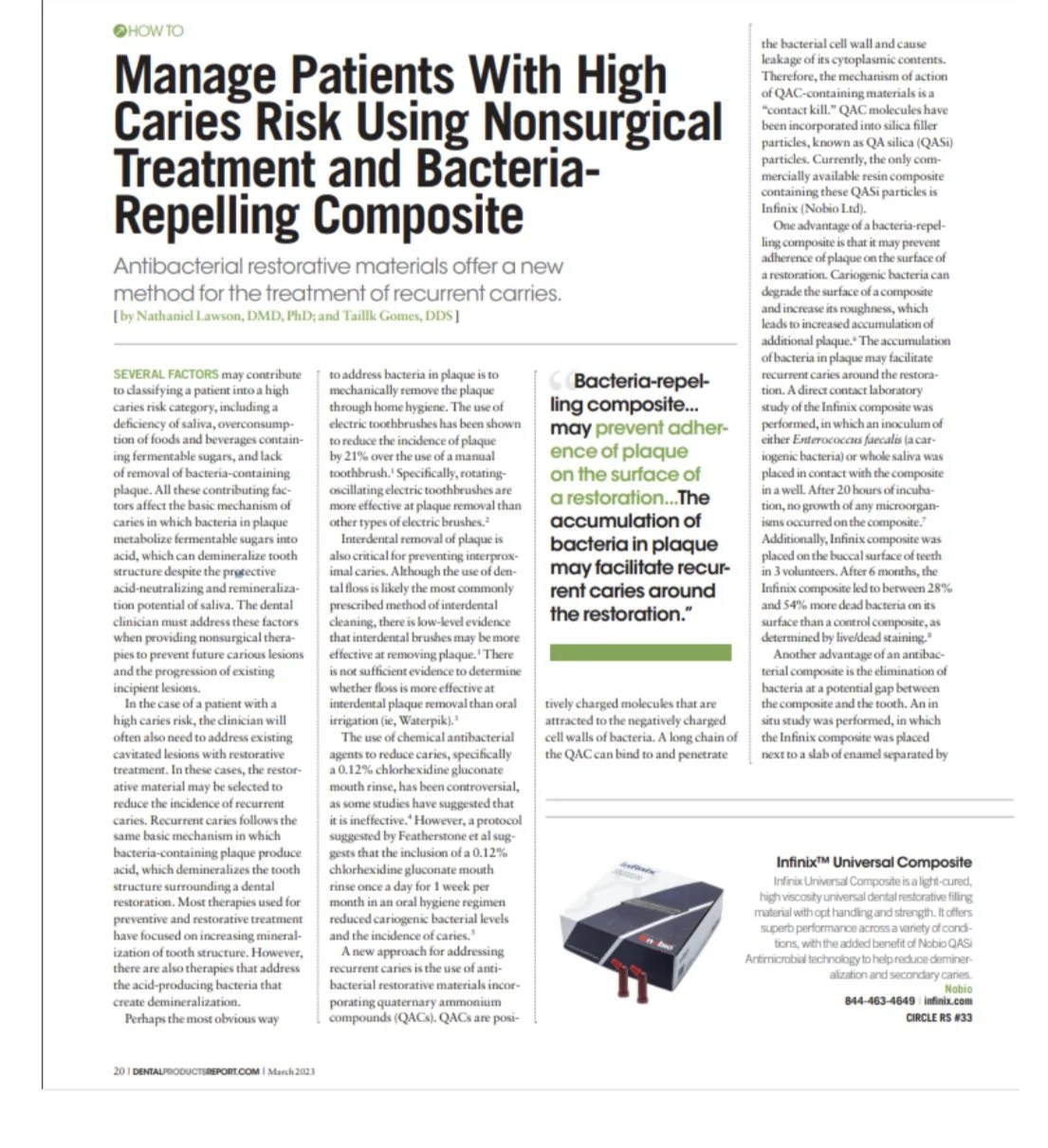Dental restorative materials containing quaternary ammonium compounds have sustained antibacterial action
/Dental restorative materials that contain QASi have sustained antibacterial properties, have mechanical properties comparable to those of presently marketed materials, and have been cleared by the US Food and Drug Administration. Clinical studies have shown that composites incorporating QASi have the potential to markedly reduce the occurrence of caries around restorations. Because caries around restorations is a major problem, restorative materials with sustained antibacterial properties will have an important effect in reducing secondary caries around restorations.
Read More




